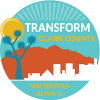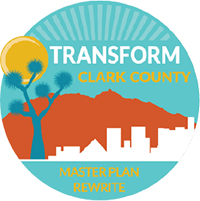Goal 6.1: A coordinated pattern of development in unincorporated Clark County
Continue to work with regional and state agencies and service providers to ensure that the water supply, water treatment and distribution capacity, sewage treatment, school capacity, and transportation network is capable of serving present and future demand within the Las Vegas Valley and in outlying communities in Clark County.
Plan for a mix of residential and non-residential uses in unincorporated Clark County to support a balance of jobs and housing within the Las Vegas Valley, as well as in outlying communities. Consider development constraints when evaluating future land use plans to ensure proposed uses can be implemented without creating unintended conflicts. [See also, Policy 5.5.1, Designated Employment Areas]
Continue to plan for a mix of urban, suburban, and rural development based on the needs of different areas and communities within unincorporated Clark County. Clearly articulate these intended distinctions through adopted land use categories and supporting regulations to increase predictability for residents, property owners, and investors about intended future land use patterns in a given location. [See also, Core Value 1, Unique Communities, Neighborhoods, and Lifestyles]
Encourage compact and efficient development patterns within the disposal boundary to maximize the use of available infrastructure, land, and other resources, and support existing and future transit service while considering community compatibility, airport overlay zones, and other factors that may limit development intensity in some areas. [See also, Goals 1.5, 5.1, and 5.2 and supporting policies.]
Continue to plan for and support the implementation of higher-density, transit-oriented development projects along the Maryland Parkway corridor and other transit corridors within unincorporated Clark County in collaboration with RTC, the City of Las Vegas, and other partners. [See also, Policy 5.1.4, Regional Opportunity Sites]
Encourage infill, redevelopment, and the adaptive reuse of vacant or underutilized buildings—both public and private—as a means to encourage reinvestment, expand housing options, and encourage sustainable development patterns. Prioritize the use of development incentives in areas where high capacity transit exists or is planned. [See also, Policy 6.1.5, Transit-Oriented Development]
Coordinate with the BLM on any changes to the extent of the disposal boundary, acquisition of lands for local public purposes, and identifying public lands appropriate for privatization within existing and future disposal boundaries.

